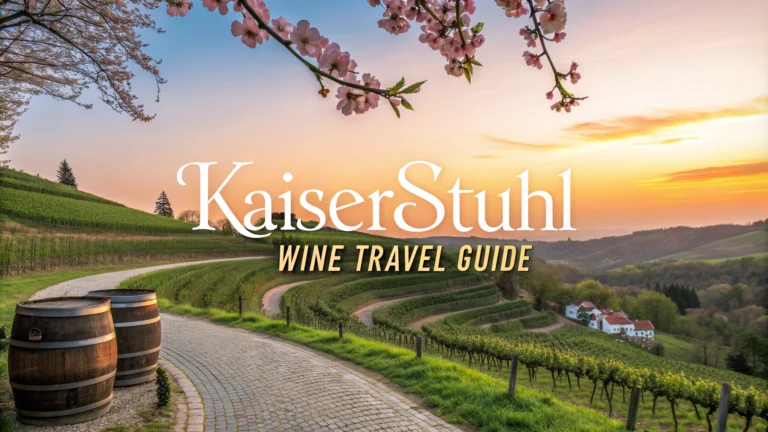Discovering Évora-Alentejo: A Wine Lover’s Paradise
Évora-Alentejo, a picturesque region in southern Portugal, offers a perfect blend of rich history and exceptional wines. This UNESCO World Heritage site boasts ancient Roman ruins, medieval architecture, and vast vineyards producing some of Portugal’s finest wines.
Towns and Villages
Évora, the region’s capital, is a must-visit for its well-preserved old town and Roman Temple. Explore Monsaraz, a charming hilltop village with panoramic views of the Alqueva Dam.
Don’t miss Reguengos de Monsaraz, known for its pottery and wineries. Visit Redondo for its traditional tile-covered houses and wine museum.
Wine Producers
Alentejo is home to numerous renowned wineries. Herdade do Esporão offers guided tours, tastings, and a Michelin-starred restaurant.
Adega da Cartuxa produces the famous Pêra-Manca wines. Book a tour at João Portugal Ramos to experience their sustainable winemaking practices.
Notable Wineries:
- Herdade do Rocim
- Cortes de Cima
- Herdade dos Grous
- Quinta do Carmo
Accommodations
Stay at the luxurious Convento do Espinheiro, a converted 15th-century convent with a wine cellar and tasting room. For a rural experience, try L’AND Vineyards Resort, offering wine-themed suites and a winery.
Budget-conscious travelers can enjoy Moov Hotel Évora, centrally located in Évora. Monte Saraz in Monsaraz provides charming cottages with vineyard views.
Dining
Savor traditional Alentejo cuisine at Restaurante Fialho in Évora, known for its pork and game dishes. Restaurante Dom Joaquim offers modern interpretations of regional specialties.
For fine dining, try Restaurante Divinus at Convento do Espinheiro. Visit Taberna Típica Quarta Feira for an authentic local experience with no menu and daily changing dishes.
Wine Shops & Bars
Visit Divinus Gourmet in Évora for a curated selection of Alentejo wines. Ervideira Wine Shop offers tastings and local products.
For a cozy wine bar experience, try Arcada do Vinho in Évora’s historic center. Café Alentejo boasts an extensive wine list and outdoor seating.
Other Shops
Purchase traditional cork products at Cork & Co in Évora. Loja do Guadiana in Reguengos de Monsaraz sells local handicrafts and gourmet foods.
For authentic Alentejo pottery, visit Olaria Bulhão in Redondo. Monsaraz Museu Aberto offers a range of regional artisanal goods.
Attractions
Explore the Roman Temple of Évora and the eerie Chapel of Bones. Visit the Megalithic Circuit near Monsaraz to see ancient stone formations.
Take a boat tour on the Alqueva Lake, Europe’s largest artificial lake. Enjoy stargazing at the Dark Sky Alqueva Reserve, the world’s first “Starlight Tourism Destination”.
Events
Attend the Évora Wine Festival in May for tastings and workshops. Festa da Vinha e do Vinho in Borba celebrates the harvest in November with parades and wine-related activities.
Reguengos de Monsaraz Wine Harvest Festival in September offers grape stomping and local music. Don’t miss the São João Festival in Évora for traditional music and dance in June.
Appellations
Alentejo has eight sub-regions: Portalegre, Borba, Redondo, Reguengos, Granja-Amareleja, Vidigueira, Évora, and Moura. Each offers distinct terroir and wine styles.
Look for wines with the DOC Alentejo (Denominação de Origem Controlada) label for guaranteed quality and authenticity. Vinho Regional Alentejano allows more flexibility in grape varieties and production methods.
Grape Varieties
Alentejo’s diverse terroir supports a wide range of grape varieties. Aragonez (Tempranillo) and Alicante Bouschet dominate red wine production.
White wines feature indigenous grapes like Antão Vaz, Arinto, and Roupeiro. International varieties such as Syrah and Cabernet Sauvignon are also cultivated.
Main Wine Styles
Alentejo produces full-bodied, fruit-forward red wines with smooth tannins. Blends are common, combining local and international varieties.
White wines range from crisp and refreshing to rich and complex. Rosé production is increasing, offering a perfect summer option.
Food Specialties
Black pork from Alentejo is a prized delicacy. Try it with migas, a traditional bread-based side dish.
Sheep’s cheese and olive oil are regional staples. Don’t miss the açorda, a bread soup often served with seafood.
Drives & Walks
The Rota dos Vinhos do Alentejo (Alentejo Wine Route) offers scenic drives through vineyards and cork forests. Stop at wineries like Herdade do Esporão and João Portugal Ramos.
For nature lovers, the São Mamede Natural Park provides hiking trails with stunning views. Combine outdoor activities with visits to nearby wineries.
Itineraries
3-Day Wine Tour
- Day 1: Explore Évora’s historic center, visit Cartuxa winery
- Day 2: Drive to Reguengos de Monsaraz, tour Herdade do Esporão
- Day 3: Visit Adega José de Sousa in Reguengos, return to Évora
Week-long Alentejo Experience
- Days 1-2: Évora and nearby wineries
- Days 3-4: Reguengos de Monsaraz and Lake Alqueva
- Days 5-6: Portalegre and São Mamede Natural Park
- Day 7: Return to Évora, final wine tasting
Getting There & Around
Fly into Lisbon Airport or Faro Airport, then rent a car for easy access to Alentejo’s wineries. Public transportation is limited in rural areas.
Consider hiring a private driver for wine tours to avoid drinking and driving. Many wineries offer shuttle services from nearby towns.
Best Time to Visit
Spring (April-May) and fall (September-October) offer pleasant weather for wine tasting and outdoor activities. Avoid August, as it can be extremely hot.
Visit during harvest season (September-October) to participate in grape picking and wine production events.
Sustainability Efforts
Many Alentejo wineries practice organic or biodynamic viticulture. Herdade dos Grous and Herdade do Freixo are leaders in sustainable winemaking.
The Wines of Alentejo Sustainability Program promotes eco-friendly practices across the region. Look for certified sustainable wineries during your visit.
Language Tips
Learn basic Portuguese wine terms: “vinho tinto” (red wine), “vinho branco” (white wine), and “saúde” (cheers).
Most winery staff speak English, but attempting Portuguese is appreciated. Download a translation app for menu navigation.
Further Resources
- Wines of Alentejo – Official wine region website
- Visit Portugal – Alentejo – Tourism information
- Wine Tourism in Portugal – Wine tour bookings
Download the “Alentejo Wine Route” app for interactive maps and winery information.

